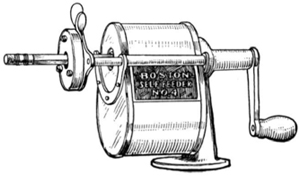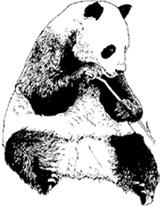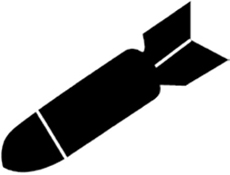Now I Know More (16 page)
Authors: Dan Lewis

The test led to absurd results, even accounting for the bigoted nature of its purpose. Of particular note was the case of Sandra Laing, a darker-skinned girl born to two white parents (and from at least three generations of white ancestors). In the mid-1960s, Laing, then ten years old, was subjected to the pencil test to determine the “true” nature of her race. When the pencil remained lodged in her hair, she was ruled to be coloured and, therefore, expelled from her (all-white) school. Despite her father's insistence that Sandra was his daughter and the results of a paternity test supporting his assertion, the Laings were thereafter considered outcasts from the white community.
The pencil test lasted well into the 1990s, only officially falling onto the ash heap of South African history when the apartheid regime crumbled in 1994.
How did South Africa handle people of Asian descent? Depends on one's nationality. In the 1960s, Japanese people were considered “honorary whites,” likely in an effort to encourage trade between the two nations, as whites in South Africa were not allowed to otherwise associate with non-whites. However, most other Asian groups were not offered the same classification until years later. Chinese people, for example, were not considered “honorary whites” until 1984.

THE PENCIL WITH THE UNFORTUNATE MESSAGE
The American “War on Drugs” began informally in the early 1970s. On October 27, 1970, Congress passed the Comprehensive Drug Abuse Prevention and Control Act, and the next year, two members of the legislative body issued a report asserting that 10â15 percent of servicemen in Vietnam were heroin addicts. In response, President Richard Nixon declared in a press conference that drug abuse was “public enemy number one in the United States”âand presidents and politicians since, by and large, have followed suit.
While punishment and treatment are the hallmarks of the War on Drugs, anti-drug messaging has also been a major component, especially as it pertains to children and teens. Countless public service announcements, posters, and other media have been put toward this effort. In the late 1990s, one group tried a new method of messagingâcustom imprinting slogans on the sides of the ubiquitous Number 2 pencils used throughout schools.
The idea seemed like an easy one: print the words “Too Cool to Do Drugs” on the pencils, turning each ten-cent writing utensil into an anti-drug nudge.
But then the kids started to use them. The pencils, that is, not drugs.
To use a Number 2 pencil, you have to sharpen it. And the more you sharpen it, the more the pencil shrinks, sometimes down to just a point attached to that little metal sleeve that holds the little pink eraser. Normally, that's not an issue. In this case, though, it was a particularly egregious problem. The words were positioned in such a way that, as children used their pencils, the message changed. “Too Cool to Do Drugs” soon became “Cool to Do Drugs” and, not long after, simply “Do Drugs.”
The organization that sponsored the special pencils, the Bureau for At-Risk Kids, recalled them after a ten-year-old at a New York-area school noticed the problem. The bureau ended up re-issuing the pencils with the message repositioned so that it shortened, when the pencil was sharpened, to read “Too Cool.” But if you really want one that's not “Too Cool” and advocates for drug use instead, you can find them online pretty easily.
The little metal sleeve that attaches the eraser to the rest of a Number 2 pencil? It has a nameâit's called a ferrule.

THE UNLIKELY SPONSORS OF SOME CHINESE ELEMENTARY SCHOOLS
On May 12, 2008, an 8.0 magnitude earthquake struck Sichuan, China. The earthquake and its aftershocks took the lives of nearly 70,000 people with another 20,000 deemed missing. An additional 375,000 people were injured. The region's infrastructure was also badly damagedâestimates vary, but between 5 and 10 million people lost their homes, constituting perhaps as much as 50 percent of the area's population. In hopes of rebuilding the region, the Chinese government set aside the equivalent of nearly $150 billion, a huge amount of money, but probably much less than what was needed to return Sichuan back to its former state. Many private businesses rose to the occasion, finding funding and solutions for those affected by the tragedy.
That is why some children in the area go to the Tobacco Hope Elementary School.
After the earthquake, tobacco companies were on the forefront of the effort to revitalize education in the region. The China Tobacco Companyâworking with an organization called Project Hopeâopened seventy schools over the course of a year throughout the region. In exchange, the tobacco industry bought sponsorship rights. Schools come with textbooks, desks, pencil sharpeners, and a side of pro-nicotine
propaganda
; one school, by way of example, had the message “Work hard for society! Tobacco can help you become an achiever!” on its walls.
The move was, of course, controversial. According to a survey by Peking University, nearly one-third of boys under the age of fifteen had tried a cigarette at least once. (Less than 10 percent of similarly-aged American children have lit up.) Among smokers, the average age of their first cigarette was ten. In hopes of stemming the tide, tobacco advertisements are banned from newspapers, TV, and radio in Chinaâso one would think that the walls of schools would be treated similarly if not more stringently.
The tobacco industry wasn't shirking from criticism. A spokesperson for the China Tobacco Company told
Beijing Today
that the company was just doing its part to help the region recover from disaster: “Tobacco firms should not be barred from contributing to social welfare simply because the cigarettes they produce are harmful to their user's health.” For low-income areas, finding the 200,000 yuan (about $30,000 to $35,000) to open a Project Hope school was an otherwise impossible task, as no other sponsors popped up.
For the time being, the tobacco lobby isn't stopping these sponsorships. Through 2011, they've helped open more than 100 schools as well as a network of libraries. Parents whose children use these resources seem okay with the arrangement. Wu Yiqun, a researcher and opponent of the tobacco-branded schools, told the
Telegraph
that “parents are actually very supportive of the tobacco companies. They think they are giving something back to society.” But Wu, who also noted that schools give out cigarette-shaped candy, cautioned that the tobacco companies “are just using charity as a front.”
In the United States, the American Legacy Foundation runs a lot of anti-smoking ads. The Foundation's main source of income? The tobacco companies themselves. In 1998, four major tobacco companies entered into a settlement with the attorneys general of forty-six states; the settlement, among other things, called for creation of an anti-smoking media entity funded by annual payments from the cigarette companies.

CHINA'S VERY CUTE AND LUCRATIVE ANIMAL RENTAL BUSINESS
On August 23, 2013, a giant panda named Mei Xiang gave birth to a cub at the National Zoo in Washington, DC, grabbing the world's attention. Giant pandas are an endangered species, with only a few hundred living in captivity and an estimated 2,000 to 3,000 living in the wild. Most of the giant pandas in captivity (and all of the ones in the wild) are in China, but if you'd like to see one elsewhere, many zoos across the world have a few. In the United States the National Zoo now has three, Zoo Atlanta has four, and the San Diego Zoo has two. There are also giant pandas in zoos in Canada, Mexico, Austria, Spain, Australia, Singapore, and a half dozen or so other countries.
However, the pandas don't really live thereâat least not permanently. They're all on vacation of sorts. Mei Xiang and the others are owned by China and are participating in a lucrative panda-lending program.
Originally, China gave pandas to countriesâno strings attached. Starting in the 1950s, the Chinese government used the popularity (and adorableness) of giant pandas to curry favor with other nations by gifting the creatures to governments around the world. In 1972, for example, China gave two giant pandas to the United States as thanks for President Richard Nixon's historic visit to their nation (which itself began to normalize the relationship between the two countries). First Lady Pat Nixon ensured that those two pandas, Ling-Ling and Hsing-Hsing, were housed at the National Zoo. The program was very successful. Other countriesâmany of which had little in the way of relations with Chinaâasked for pandas as well. In 1984, though, China stopped giving pandas away. Instead, the Chinese government began loaning them out.
Under the terms of the revised Chinese plan, zoos were offered pandas only for a ten-year period. (There's some evidence that renewals are possible.) Because all the pandas now in captivity outside of China were born after the 1984 change, “all giant pandas outside China are actually on loan from the country,” as NPR points out. The cost of renting a panda is $1,000,000 per year, payable to China's Wildlife Conservation Association. Perhaps most strikingly, the lease agreement requires that any cubs born to loaned-out pandas be returned to China. So Mei Xiang's addition will likely go back to China at some point early on in its life. The good news, though, is that the baby will be reunited with its brother. Tai Shan, a panda born to Mei Xiang in 2005, was returned to China in 2009.
How do pandas go from China to points abroad, and back? They fly FedEx, pursuant to a special deal between the air-freight hauler and the Chinese government. The plane used has a big picture of a panda eating leaves painted on the side, and the pandas themselves fly in a crate with transparent side walls.

RICHARD NIXON'S CRAZY THEORY ON PREVENTING A NUCLEAR WAR
For most of the Cold War, three words dictated the game theory outcomes behind military strategies: mutually assured destruction. At any moment, the United States and its NATO allies could volley nuclear missiles at the Soviet Union, destroying the Russians in the process. The Soviets, however, could do the same to the Western powers. If either side acted, the other would have ample time to react. Who shot first would hardly matter, as in the end, we'd all suffer the same fate.
